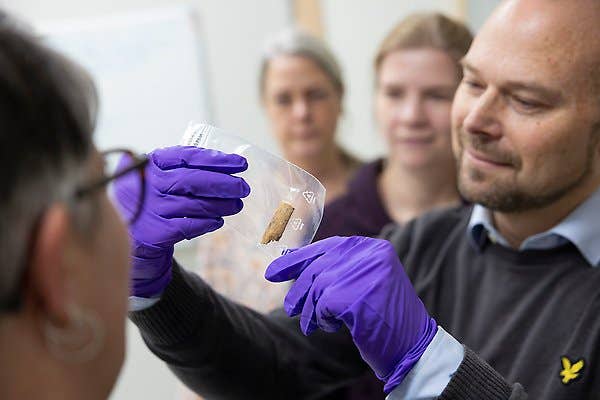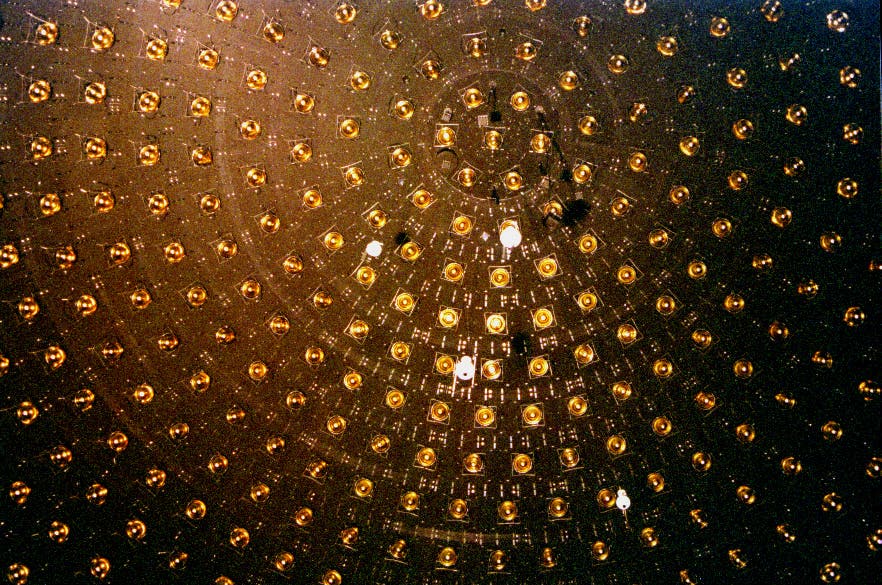Breakthrough blood test detects colon cancer early with 95% accuracy
New RNA-based liquid biopsy detects early colon cancer with 95% accuracy, offering hope for painless early diagnosis.

A new test developed at the University of Chicago detects early colon cancer by analyzing RNA modifications, achieving 95% accuracy. (CREDIT: Canva)
Liquid biopsies have transformed cancer testing. These tests detect signs of cancer using a simple blood draw instead of removing tissue from the body. Traditional biopsies involve surgery, needles, and pain. In contrast, liquid biopsies look for cancer’s genetic clues in the bloodstream.
Most of these tests hunt for fragments of DNA called circulating cell-free DNA, or cfDNA. These fragments come from dying tumor cells. But there’s a catch. In early cancer stages, tumors are still small and healthy. They don’t shed enough DNA into the blood for tests to detect them. As a result, liquid biopsies miss early cancers when treatment is most effective.
Researchers at the University of Chicago wanted to change this. They developed a new blood test that uses RNA instead of DNA. This test detected early-stage colorectal cancer with 95% accuracy. That is a major improvement over current non-invasive tests.
Why Early Diagnosis is So Difficult
When cancer cells die, they break apart and release genetic materials into the bloodstream. Current liquid biopsies depend on this floating DNA. But early tumors remain alive and intact. They don’t release much DNA.
“That has been a major challenge for early diagnosis. You just don’t have enough tumor DNA released into the blood,” explained Dr. Chuan He, senior author of the study. He is a Professor of Chemistry, Biochemistry, and Molecular Biology at the University of Chicago. “That was a challenge for us and everyone else to do early diagnosis of colon cancer, so we decided to look at RNA instead.”
RNA is like a messenger. It carries instructions from DNA to make proteins. Unlike DNA, RNA shows what cells are doing in real-time. If a cell is active, it makes RNA to produce the proteins it needs. Dr. He’s team thought this activity could reveal cancer even when DNA levels were too low to detect.
Related Stories
Graduate student Cheng-Wei Ju and Dr. Li-Sheng Zhang, a former postdoc now at the Hong Kong University of Science and Technology, explored this idea. They studied blood samples from patients with colorectal cancer to see if RNA could signal disease earlier than DNA.
But measuring RNA levels in blood isn’t simple. The amount of RNA varies depending on sample preparation and timing. Dr. He’s lab specializes in studying chemical modifications in RNA. These small changes control how RNA works. Importantly, the percentage of RNA that carries these modifications stays stable even when RNA amounts vary.
For example, if 30% of a specific RNA molecule is modified, that number remains 30% whether you have 100 or 1,000 copies. This stability makes RNA modifications ideal as a cancer marker.
Insights From Microbial RNA
The team used blood samples from colorectal cancer patients provided by Dr. Marc Bissonnette, a gastroenterologist at the University of Chicago. They discovered something surprising. Not only could they detect human RNA modifications, but they also found RNA fragments from gut microbes in the blood.
Billions of bacteria live in the digestive system. When cancer grows, these bacteria change their behavior. Dr. He explained, “We found that RNA released from microbes has substantial differences between cancer patients versus healthy individuals. In the gut when you have a tumor growing, the nearby microbiome must be reshaped in response to that inflammation. That affects the nearby microbes.”
Gut microbes die and replace themselves more quickly than human cells. As they die, they release RNA fragments into the blood. This creates a rich source of microbial RNA to analyze. Because these changes happen before tumor cells start dying, microbial RNA can reveal cancer earlier.
Tests that measure DNA or RNA levels in stool samples are about 90% accurate for late-stage cancer. But their accuracy drops below 50% for early stages. In contrast, the new RNA modification test reached almost 95% accuracy, including for early-stage cancer. That could transform how colorectal cancer is detected and treated.
“This is the first time RNA modifications have been used as a potential biomarker for cancer,” said Dr. He. “Being able to detect the cancer at those early stages is unprecedented.”
Unlocking the Science Behind The Test
The research paper, Modifications of microbiome-derived cell-free RNA in plasma discriminates colorectal cancer samples, was published in Nature Biotechnology. It details how the team developed their method, called low-input multiple methylation sequencing, or LIME-seq.
LIME-seq maps and measures chemical modifications on RNA fragments in blood. Most of these fragments are short pieces around 50 nucleotides long. Many are transfer RNAs (tRNAs), which are stable and resist breaking down. Because tRNAs are heavily modified, studying these chemical marks offers powerful clues about cell and microbial activity.
Using LIME-seq, the team profiled blood samples from 27 cancer patients at various stages and 36 healthy individuals. They found that around 30% of RNA fragments came from microbes. Most were gut bacteria from groups like Bacillales, Xanthomonadales, and Enterobacterales. Even with such small samples—only around 600 microliters of plasma per person—the method worked reliably.
The team noticed that while human RNA modifications showed differences between cancer patients and healthy individuals, these differences alone could not clearly separate the groups. However, microbial RNA told a different story. The modifications in microbial RNA showed distinct patterns in cancer patients compared to healthy controls.
Higher modification levels suggest increased microbial activity or stress, likely linked to cancer’s impact on the gut environment. The team built a statistical model based on these microbial signatures. It achieved 56% sensitivity and 97% specificity for detecting colorectal cancer. Larger studies will refine this further.
Towards A Future Of Early, Painless Detection
This research demonstrates a promising shift in cancer detection. By focusing on RNA modifications in both human and microbial genes, doctors can catch cancer earlier. Early detection leads to higher survival rates, less invasive treatment, and better patient outcomes.
The study was supported by the Ludwig Center for Metastasis at the University of Chicago, the Rolfe Foundation, the National Institutes of Health, the Hong Kong Research Grants Council, and the Howard Hughes Medical Institute.
While cfDNA has been widely used in liquid biopsies, it faces limitations. Early-stage tumors don’t shed enough DNA, and other tissues can share the same genetic changes as cancer cells, adding confusion. RNA modifications offer a more stable and activity-based snapshot of disease.
Dr. He’s team believes their method can expand to other cancers too. Detecting cancer through blood tests is fast and non-invasive, making it suitable for mass screening. They hope that within a few years, RNA modification tests could become standard in hospitals.
“It’s like listening to whispers instead of waiting for a shout,” said Dr. He. “We’re looking for small signs of cancer long before it becomes dangerous.”
This approach could also lead to new insights into the role of microbes in cancer development. As scientists study microbial RNA further, they may find ways to manipulate the gut microbiome to prevent cancer altogether.
For now, the team is planning larger clinical trials to confirm their findings. If these trials succeed, patients could one day detect cancer through a simple blood draw at their annual checkup, saving countless lives through earlier intervention.
Note: The article above provided above by The Brighter Side of News.
Like these kind of feel good stories? Get The Brighter Side of News' newsletter.



